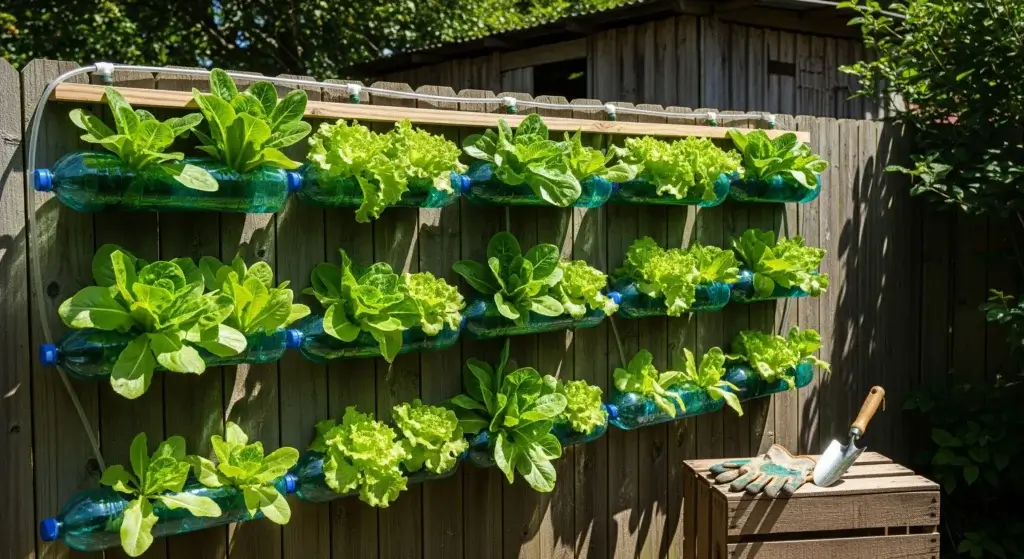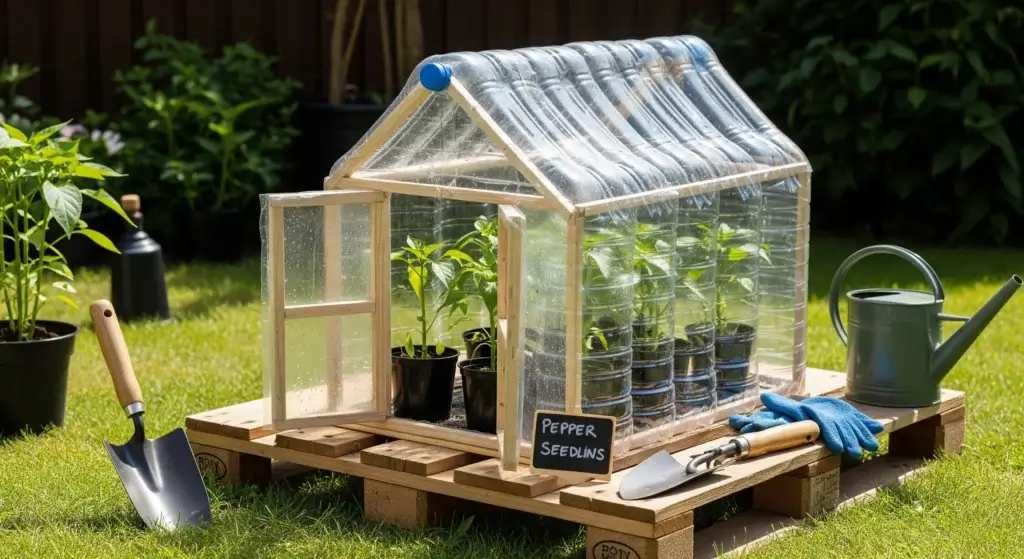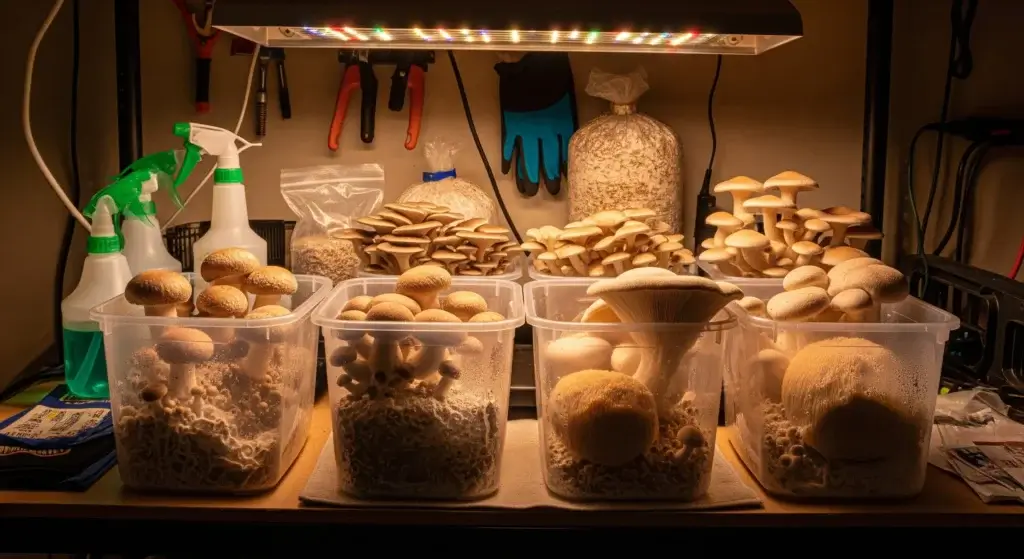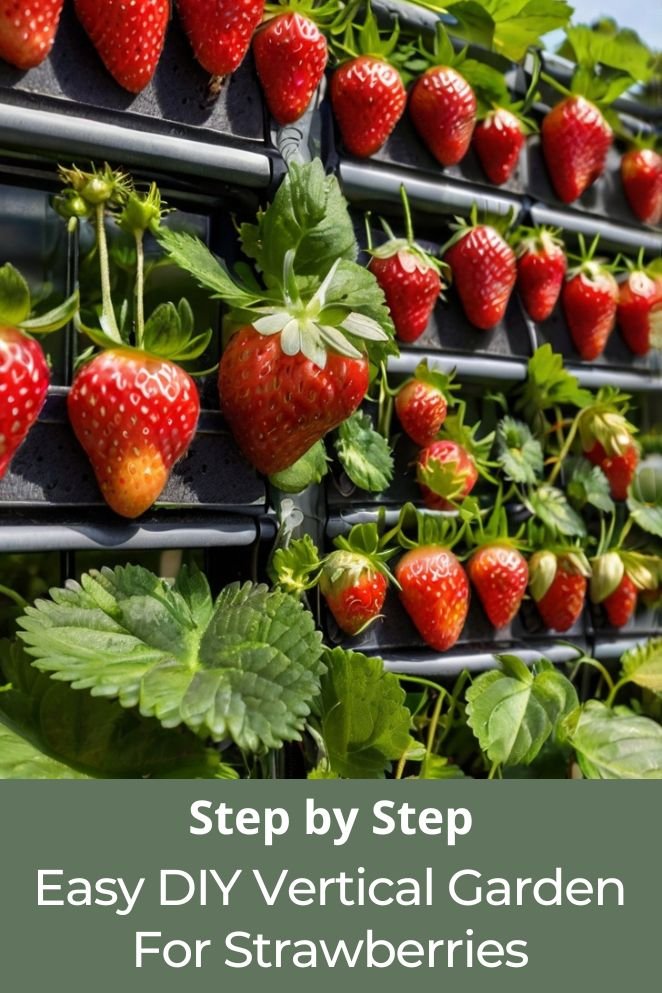
Strawberries are one of the most popular fruits in the world, and for good reason.
They are sweet, juicy, and packed with nutrients. But growing strawberries can be a challenge, especially if you have limited space.
That’s where a DIY vertical garden for strawberries comes in.
In this article, we will explore the benefits of vertical strawberry gardens and provide a step-by-step guide on how to build your own.
Benefits of Vertical Strawberry Gardens
Vertical strawberry gardens offer several benefits over traditional strawberry gardens.
Here are some of the key advantages:
Protection against pests and diseases
By growing strawberries vertically, you create a controlled environment that acts as a barrier against pests and diseases.
This reduces the risk of infestations by insects and pathogens, safeguarding your plants and ensuring healthier growth.
- Read also: Garden Up! Easy DIY Vertical Gardens in Small Spaces
- Read also: Balcony Heaven: DIY Vertical Herb Garden For Balcony
Protection against fungal diseases
Vertical gardening promotes better air circulation and reduces humidity, making strawberries less susceptible to fungal diseases.
This creates an optimal environment for plant growth, leading to higher yields and minimizing the need for chemical interventions.
Easier harvesting
One of the most significant advantages of vertical strawberry gardens is the ease of harvesting.
With fruits positioned at eye level, there’s no need for bending or crawling to reach them.
This not only saves time but also reduces strain on the grower, making the harvesting process more efficient and enjoyable.
Increased yield
Vertical gardening techniques optimize growing conditions, resulting in higher yields compared to traditional methods.
Studies have shown that vertical strawberry gardens can boost yields by up to 50%, thanks to improved access to light, nutrients, and water, as well as reduced competition among plants.
Space efficiency
Vertical gardening maximizes limited space, making it ideal for urban gardeners or those with small yards.
By utilizing vertical structures such as towers or hanging baskets, you can grow more plants in a smaller footprint, without sacrificing productivity or aesthetics.
Reduced water consumption
Vertical strawberry gardens often employ hydroponic or aeroponic systems, which use significantly less water than traditional soil-based methods.
This not only conserves water but also reduces the risk of soil-borne diseases and nutrient deficiencies.
Additionally, water usage can be further optimized through techniques like drip irrigation, minimizing wastage and environmental impact.

Choosing Your DIY Vertical Garden Method
When it comes to building your own DIY vertical garden for strawberries, there are various methods to choose from, each with its own set of advantages and considerations.
Let’s delve deeper into three popular options:
Option 1: Stacked planters
This method involves arranging progressively smaller planters on top of one another, creating a tiered tower where strawberries can thrive.
Stacked planters offer a simple and straightforward setup, using readily available materials like pots or containers.
However, it’s essential to note that this option may have limited planting space compared to other methods, as each tier must support the weight of the layers above it.
Advantages
- Easy to set up with commonly available materials.
- Offers a visually appealing tiered design.
Disadvantages
- Limited planting space compared to other options.
- Requires careful consideration of weight distribution to prevent instability.
Option 2: PVC pipe planter
Using PVC pipes to create a vertical planter is another popular choice for growing strawberries.
By drilling strategic holes along the length of the pipe, you can insert strawberry plants, allowing them to cascade downwards as they grow.
This method offers the advantage of customizable sizing to fit your space and efficient watering system possibilities.
However, assembling PVC pipe planters may require drilling and potentially additional tools, making it slightly more complex than other options.
Advantages
- Customizable size to fit your space requirements.
- Provides efficient watering system possibilities.
Disadvantages
- Requires drilling and potential use of additional tools for assembly.
- Careful planning needed to ensure proper drainage and stability.
Option 3: Hanging pockets
For a unique and space-saving vertical garden, consider repurposing fabric grow bags or creating pockets from fabric to hang on walls or fences.
This method offers lightweight and visually appealing options for growing strawberries vertically.
However, it’s important to note that hanging pockets may require additional support, especially when filled with soil and fruit, to prevent sagging or instability.
Advantages
- Lightweight and space-saving design.
- Offers a unique visual appeal to your garden space.
Disadvantages
- May require additional support for heavier pockets when full of soil and fruit.
- Fabric material may degrade over time and require replacement.
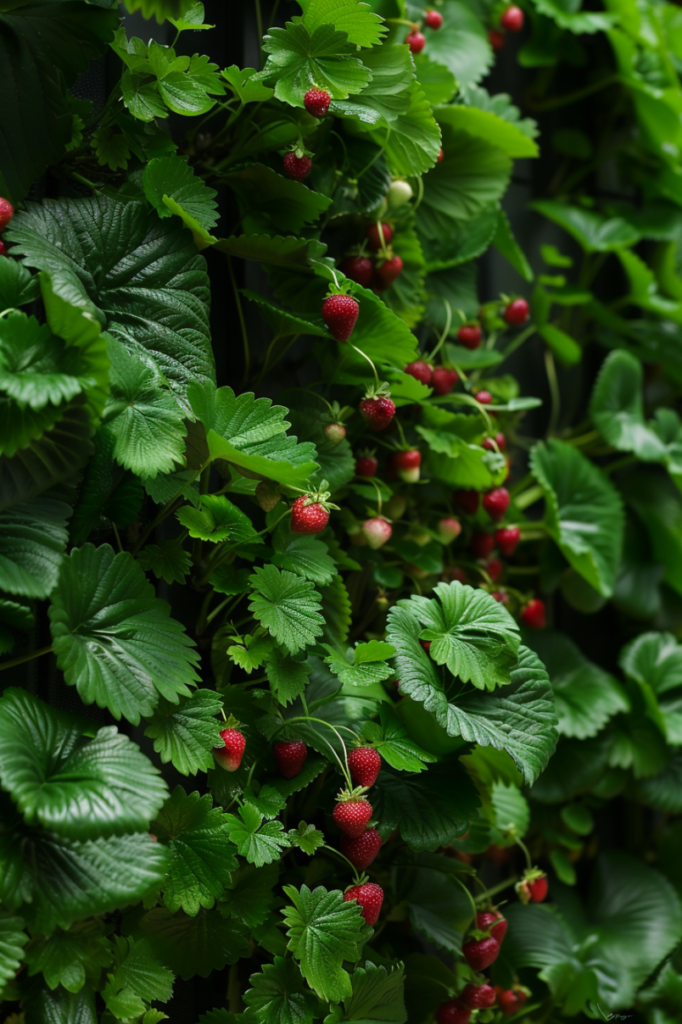
Building Your Vertical Strawberry Paradise
Materials needed
To build your vertical strawberry garden, you will need the following materials:
- PVC pipe or wooden dowels
- Plastic or fabric planters
- Soil
- Strawberry plants
- Watering system (optional)
Step-by-step guide
Here is a step-by-step guide to building your vertical strawberry garden:
Plan your design
Begin by envisioning the size and shape of your vertical garden.
Consider the available space and the number of strawberry plants you intend to grow.
Whether you opt for a simple rectangular design or a more elaborate structure, careful planning at this stage will ensure a successful outcome.
Assemble the frame
Use PVC pipes or wooden dowels to construct the framework for your vertical garden.
Arrange them in the desired configuration, ensuring stability and structural integrity.
You can create a basic rectangular frame or unleash your creativity with a unique design that complements your garden space.
Add planters
Securely attach the planters to the frame using screws, nails, or adhesive.
Position them at regular intervals along the frame, leaving adequate space between each planter for the strawberry plants to flourish.
Ensure that the planters are firmly affixed to prevent any potential accidents or instability.
Add soil and plants
Fill each planter with nutrient-rich soil, leaving enough room to accommodate the strawberry plants.
Carefully transplant the strawberry seedlings into the soil, ensuring that their roots are well-covered and supported.
Space the plants evenly to allow for optimal growth and airflow.
Watering system
Consider incorporating a watering system into your vertical garden setup for efficient irrigation.
Options range from simple drip irrigation systems to more advanced hydroponic setups, depending on your preferences and resources.
Install the watering system according to the manufacturer’s instructions, ensuring consistent moisture levels for your strawberry plants.
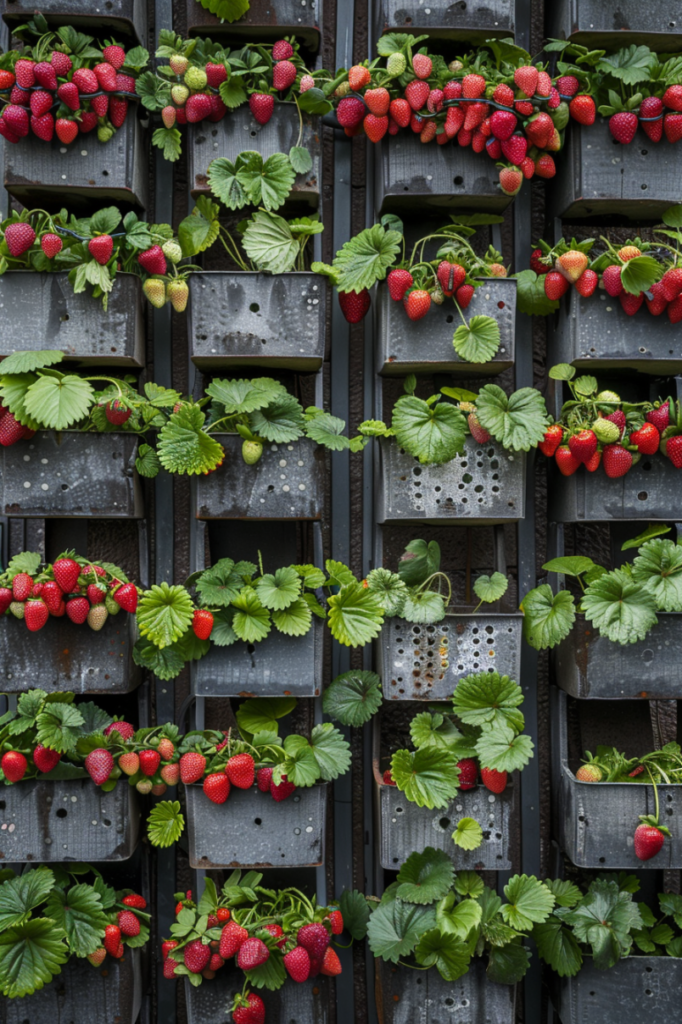
Planting and Care
Once your vertical strawberry garden is built, it’s time to plant and care for your strawberries.
Here are some tips to keep in mind:
Soil
a well-draining soil mix specifically formulated for strawberries.
This type of soil will provide the proper balance of nutrients and moisture retention necessary for optimal plant growth.
Avoid heavy or compacted soils, as they can hinder root development and lead to waterlogging
Watering
Maintain a consistent watering schedule for your strawberries, ensuring that the soil remains evenly moist but not waterlogged.
Check the soil moisture daily by inserting your finger into the soil; water only when the top inch feels dry to the touch.
Overwatering can lead to root rot and other moisture-related issues, so err on the side of caution.
Fertilization
Keep your strawberry plants well-fed by fertilizing them regularly with a balanced fertilizer.
Choose a fertilizer specifically formulated for fruit-bearing plants and follow the manufacturer’s recommendations for application rates and frequency.
Apply the fertilizer evenly around the base of the plants, taking care not to over-fertilize, which can cause nutrient imbalances and damage to the plants.
Pruning
Pruning is essential for maintaining the health and productivity of your strawberry plants.
Regularly remove dead or diseased foliage, as well as any runners (elongated stems) that may divert energy away from fruit production.
Pruning encourages air circulation and light penetration, which are essential for preventing fungal diseases and promoting robust growth.
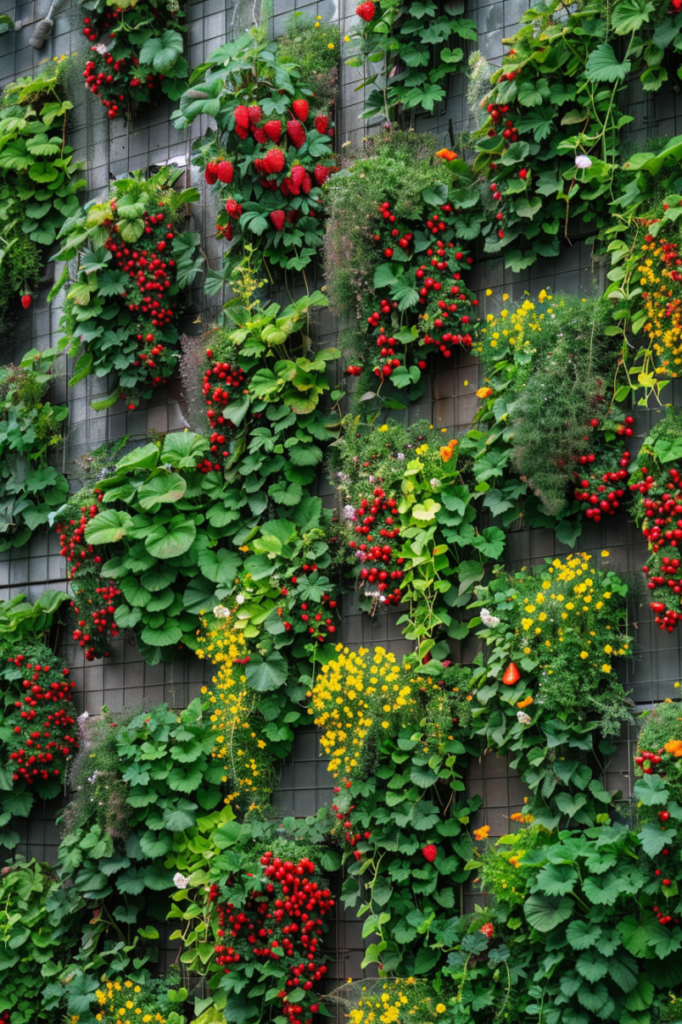
- Read also: DIY Herb Spiral Garden: The Perfect Solution for Small Spaces
- Read also: Tiny Garden, Big Harvest: DIY Vegetable Garden For Small Spaces
Conclusion
Building a DIY vertical garden for strawberries is a fun and rewarding project.
With the right materials and a little creativity, you can create a beautiful and productive strawberry garden that will provide you with fresh fruit all season long.
Remember to choose the right method for your space and needs, and don’t be afraid to get creative with your design.

